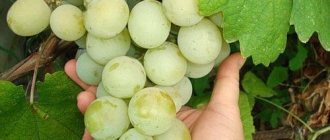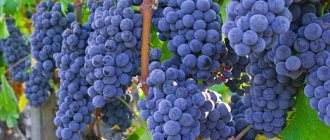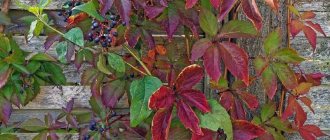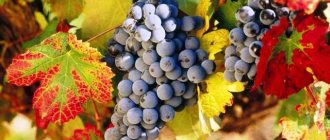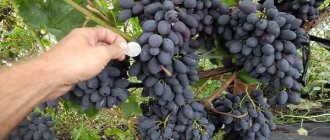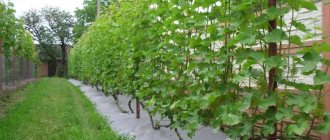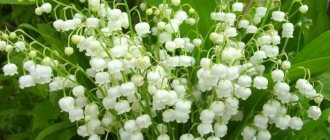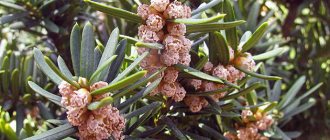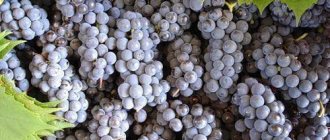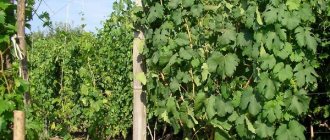Origin
Codryanka is a well-known crop variety among winegrowers, which has become widespread in the post-Soviet space and in Europe. It is easy to care for and grow, but requires compliance with important rules.
The variety was bred in the Republic of Moldova, and is the result of crossing two varieties of the crop - Marshall and Moldova. After the tests, he was entered into a register called Kodryanka.
At first, grapes were cultivated only in their homeland, but since 1992, winegrowers from other countries began to actively take an interest in them, which is where their march around the world began.
Codrianka has gained popularity even in Italy, a country where they understand good grapes. There it is grown under the name Black Magic.
Grapes Kodryanka - description of the variety
A wonderful variety is offered to the attention of experienced winegrowers and novice gardeners - the Kodryanka Grape. This hybrid was produced by Moldavian breeders as a result of crossing the varieties Moldova and Marshalsky, and today it actively grows in temperate climates around the world.
Codrianka is an extremely early variety that bears fruit in all its superiority already in mid-August. To reach the peak of its growing season, the hybrid will need up to 110 days - during this period, the strong root system will absorb all the essential substances for its fruits and present them in the form of a dark purple oblong berry.
The brush of such a hybrid holds quite firmly on the vine and even after full ripening can hang for up to 12 days without losing its taste. The Codryanka grape, the description of the variety and reviews of which are exclusively positive, is not grown for sale, but exclusively for home consumption and wine production.
According to the majority of winegrowers, the Kodryanka variety, even with the proper level of care, sometimes produces cracking berries, but this is not a bad indicator; on the contrary, such berries are the sweetest. In the first year of fruiting, a bush of such grapes grows 3-5 full clusters, which is a result worthy of respect.
Properties of grapes and application
The variety is considered a table variety, that is, it is intended for fresh consumption, but is suitable for culinary purposes.
Jams and compotes are made from it, dried and used as raisins, as well as for making sauces, vinegar, and juices. Sometimes wine is made from it, despite the fact that the variety is not intended for this purpose.
The fruits are well stored and do not lose their properties during transportation and storage. Most often, Codrianca is grown for personal use or for sale.
Planting grapes in open ground
Preparing a planting hole takes a lot of time. It is recommended to do this in the fall. The dimensions of the finished pit should not exceed 45-50 centimeters in depth. It is better to feed the lower layers of the earth, from 50 to 80 centimeters, with organic and mineral fertilizers. We plant the plant with its roots facing south, water and mulch with dry soil. This way, the top layer of soil will not become compacted, crack, or block the access of oxygen to the roots.
Planting pit for grapes
When planting grapes in the fall, do so a month before the first frost. Such planting will have a beneficial effect on the root system, which will have time to grow stronger and take root. Wet soil should be sprinkled with dry soil prepared in advance.
Planting and care
There are two ways to plant Codryanka grapes - rooting seedlings and grafting shoots onto an adult vine. In the first case, you need to purchase annual seedlings and plant them in a suitable place.
- Dig a small hole, put mineral and organic fertilizers at the bottom
- Sprinkle the bottom with earth so that the fertilizing does not burn the tender roots.
- Place the plants in the holes, straighten the roots and cover with soil.
- Compact the soil well from above, make a shallow hole around the trunk for watering
- It is better to mulch the tree trunk circle - peat, compost or straw are best for this.
The second way to grow Kodryanka is by grafting shoots onto the vine. To do this, the upper part is covered with paraffin, and the lower part is germinated in humate. The trunk is split, a shoot is tied and the area is treated with clay. A bush grown in this way will produce a harvest earlier.
Caring for Codryanka is practically no different from growing other varieties - it requires regular watering, fertilizing, pruning and preventive measures aimed at combating diseases and pests.
It is better to buy grape seedlings from trusted sellers. Young plants must be healthy, without signs of rot, mold, fungi or other diseases.
Climate, growing region
Expert opinion
Gavrilyak Evgeniy Leonidovich
has been growing grapes for 25 years
Codriana has good adaptability, so it can grow in almost any climate. The variety is recommended for cultivation in the Lower Volga, Ural and North Caucasus regions. In addition, the likelihood of growing this grape was assessed in the southern Urals, Kursk region and Belarus, and the studies gave good results.
The soil
This variety of crop is undemanding to soil characteristics - it can be planted even on poor soils. The best option is well-drained, moist soils that are quickly warmed by the sun.
The roots of Kodryanka are sensitive to groundwater, so it is better to place plantings in places where water occurs to a depth of at least 2.5 m.
Features of cultivation
There are no special conditions or requirements for growing Kodryanka, and general care features depend on the climatic and weather conditions of the region.
- To retain moisture and prevent active growth of weeds, the soil should be mulched.
- The key to good bush productivity is proper pruning and formation of shoots, otherwise they will be overloaded with fruits.
- To prevent diseases and damage to bushes by pests, spraying of bushes is used.
Kodryanka is considered a frost-resistant variety (can withstand temperatures down to -22 degrees), but it is better to cover the bushes for the winter.
Planting and Harvest Time
To plant grapes, you need to choose the right time. In the southern regions, seedlings are rooted in the fall so that they have time to take root before the temperature drops.
When growing in other areas (north of the Rostov region), spring is considered the optimal time. The temperature outside the window should be positive, without reverse frost, and the soil should warm up to 10 degrees.
The harvest is harvested closer to autumn or in the autumn, depending on the region of growth. If there is no time for harvesting, you can postpone the event. Codriana is well preserved on the bushes, does not fall off and does not lose its taste.
Watering and fertilizers
Plantings require abundant watering - at least three buckets of water per week are poured under young seedlings, and for adult bushes the amount is doubled. In the first two years after planting, the grapes do not require fertilizing - all the necessary substances were added during planting. Further, experienced winegrowers adhere to the following scheme:
- ammonium sulfate is added in early spring;
- Before the buds appear, the bushes are fed with manure or chicken droppings;
- during the flowering period, drugs that improve fruit formation are used;
- during fruit ripening, superphosphate and potassium nitrate are added;
- Before preparing plantings for winter, humus is used.
When calculating the amount of fertilizer, it is necessary to focus on weather conditions and the condition of the bushes. Uncontrolled feeding can cause more harm than good.
Trimming
In young vines (in the first two years), only the weak parts that have not had time to ripen are removed. Mature bushes need pruning twice a year - in spring and autumn. The procedure is carried out according to a pre-developed scheme, taking into account the permissible load.
The permissible load is no more than 18-20 fruiting shoots for one bush.
Diseases and pests
Codrianka is a disease-resistant variety, especially when it comes to the common mildew and gray rot. However, there are a number of diseases that can affect plantings:
Rubella
Anthracnose
Chlorosis
Bacteriosis
Bacterial cancer
The most dangerous pests for grapes are phylloxera and spider mites. To prevent problems associated with diseases and harmful insects, it is necessary to carry out preventive treatments of plantings.
Pruning an adult plant
The process of pruning a grape bush comes down to removing up to 90% of its growth and leaving the required number of eyes plus a 100% reserve for freezing. In an adult fruiting bush we leave 40-50 eyes and the same number of spare ones.
Correct pruning of grapes
Holding such an event in the fall is less dangerous. When to perform this ritual? The timing is determined by the behavior of the foliage that fell 2-3 weeks before pruning. Before winter, the bush is covered with film and overwinters without problems.
Always leave a replacement knot with two or three vine buds. Cut it below the fruiting knot. This is done so that the sleeve does not curl in length every year. Trim fruiting and replacement vines to 10 buds. They are laid 40-50 centimeters from the ground and covered.
Do the same with the rest of the bushes. As a result, in each sleeve you will have two vines with ten eyes. After wintering, check which vines have frozen and remove them.
Advantages and disadvantages
- good yield and rapid fruiting;
- excellent taste and product quality;
- ability to grow on poor, infertile soils;
- frost resistance, immunity to diseases.
- fruits are sensitive to negative weather conditions - they may crack during rainy periods;
- the vines are prone to overload, so they need to be regularly shaped and pruned;
- The variety is prone to pea production - the formation of small seedless berries.
Pea, which is considered one of the disadvantages of the variety, can be turned into a plus. If you regularly spray the bushes with boric acid and feed them with preparations for fruit formation, you can grow large seedless fruits.
Advantages and disadvantages
The Kodryanka grape variety, like other plants, has its pros and cons; when growing this bush, they must be taken into account.
- high taste, pleasant aroma;
- excellent transportability;
- preserves its presentation for a long period of time;
- strong immunity;
- early maturation;
- the quality of berries does not depend on climate and weather;
- high yield.
- it is necessary to ration the bushes, otherwise a large amount of harvest will break the branches;
- Over time, the berries may become smaller.
Comparison table of competing varieties
| Codrianca | Arcadia | Laura | |
| Ripening period | 110-120 days | 115-125 days | 110-115 days |
| Frost resistance | -22 degrees | -21 degrees | -23 degrees |
| Productivity | 30-35 kg | 25 kg | 40 kg |
| Bunches | 500-1000 g | 800-1200 g | 1000-2500 g |
| Taste | Harmonious | Simple, harmonious, light | Balanced, with notes of nutmeg |
| Color | Dark purple | From greenish to yellow with a pink tint | Light green |
| Disease resistance | Above average | Average | Below the average |
| Shelf life | 2 months | 2 months | 1.5 months |
| Sugar accumulation | 18-19 % | 16-17 % | more than 20% |
| Acidity | 6-7 g/l | 5-6 g/l | 5-8 g/l |
Detailed Specifications
The excellent taste and market characteristics of Kodrianka allow it to hold the title of one of the best grape varieties for a long time.
Ripening period
“Black Magic” is an early ripening variety: it takes only 90-120 days from bud break to harvesting the first bunches. The period depends, first of all, on the load on the vines - the greater it is, the longer the fruits ripen. Therefore, rationing the load on the bush is a mandatory measure for “kodrianka”.
Bush
The bush is distinguished by its great growth force and can reach a height of 2 m. It forms powerful shoots that mature by 90%. In this regard, there is no need to pinch them.
A lot of leaves are formed on the grapes. They are large, round and have a wavy profile. There is practically no bubbling. On the reverse side, the leaf plate is covered with bristles, and along the edges with sharp convex teeth.
During the flowering process, bisexual buds are formed on the shoots, so the plant is self-pollinating. However, despite this, the berries sometimes begin to pea. The problem can be combated with the help of agrotechnical measures.
Bunches
“Black magic” brushes are loose, have a conical shape and are large in size - on average they weigh about 400-600 g. However, with good care you can get clusters of 1.5-2 kg. Their quantity must be normalized, otherwise the vines will begin to sag under the weight of the fruits, and the ripening dates will shift. It is recommended to leave no more than 30 pieces per bush.
Berries and taste
“Kodryanka” is distinguished by large elongated berries of a beautiful dark purple (almost black) color with a bluish tint, which is explained by the high purine content. Fruit parameters:
- Length - 2.5-3.2 cm.
- Width - 1.5-2 cm.
- Weight - 6-17 g.
They have a dense skin that is easily eaten and allows the berries to be transported and stored without damage if necessary. There are few seeds in the fruit - 2-3 pieces, and they are easily separated from the pulp.
The taste of “kodrianka” is simple, moderately sweet, without nutmeg notes. But experts rate it highly (9.1 out of 10 points) due to the balance of sugar content (16%) and acidity (up to 7 g/l).
Productivity
The bushes begin to bear fruit in the second year of life. They produce a lot of berries - up to 50 kg can be harvested from one plant. On a production scale, this is 13-16 tons of fruits per 1 hectare of vineyard. You need to harvest on time, otherwise the berries will begin to crumble.
Reviews from winegrowers
Elena Filipova
41 years old, Domodedovo
I bought several cuttings of the variety, they took root well and began to bear fruit. One year I stopped rationing; the clusters were ripe, but the berries were too small. Next, I took into account the mistake, formed the harvest correctly and received large fruits with excellent taste.rn
Ekaterina Volkova
37 years old, Saratov region
I have been growing codrianka for several years in a row. The bushes have grown strong and strong, with proper care I get 30-35 kg of harvest from each. To prevent peas, I tear off the leaves around the bunches and spray them with boric acid.
Grafting of grapes
Grafting of Kodrianka grapes can be carried out at almost any time of the year, with the exception, of course, of winter. In very early spring, before the sap begins to flow, an unblown cutting is grafted onto the bush. Also, the “black” cuttings can be grafted in late spring or early summer. It is better to plant a blossoming cutting in the fall, in early October.
Preparation of the cuttings is carried out in the same way as before planting. The cut area on the grape bush is cleaned of any dirt and carefully leveled with a sharp knife. Next, the grape trunk is split into two parts; the prepared cutting must be inserted into this split, roots down. The “grafting” site is tied with cotton cloth and coated with clay. In the fall, before freezing begins, it is better to hill up the grape bush with a “graft”.
Watering and fertilizing
In spring, grape shoots grow vigorously. To develop leaf mass, plants require fertilizers with a predominance of nitrogen. During flowering, grapes need nitrogen and potassium more, and 2 weeks before technical ripeness they are fed with a mixture of phosphorus and potassium fertilizers.
Warning! The older the bush, the more nutrients it needs. Bushes of the first and second years of life are not fed if they were well fertilized when planting.
Watering is a must in a vineyard. In order for the bushes to bear fruit well, the top layer of soil must not be allowed to dry out completely. The watering norm for an adult bush is up to 6 buckets of water.
Advice! In autumn and spring, it is good to mulch the soil around the bushes with humus.
